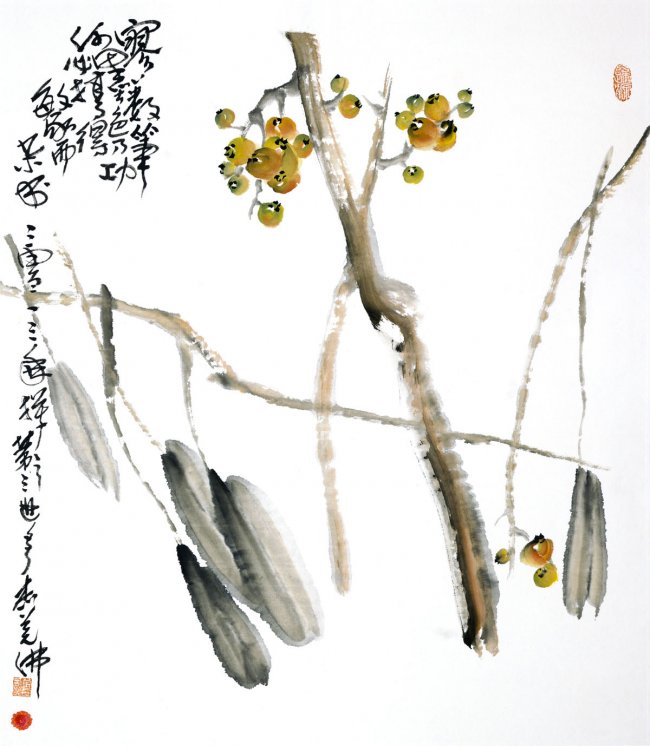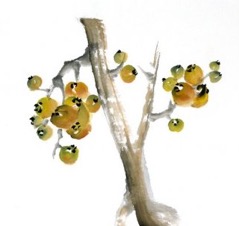Asian art auction is unveiling some rare treasures and collectibles in the coming weeks. Today, art objects are perceived not only for their enchantment and inspirations, but also viewed as securities and value holders based on their condition and rarity.
Sotheby’s is featuring an impressive imperial gilt-bronze ritual bell (bianzhong) from the Qianlong period. It is meticulously carved and contains some of the most sought after features that a collector desires; including a pair of five-claw dragons. At the base, it is clearly marked Qianlong eighth year, corresponding to 1743. This pair of bells have also come from an impeccable provenance, having been owned by one of America’s most influential publisher William Randolph Hearst (1863-1951), who acquired it from the pre-eminent 20th century art dealer Yamanaka and Company. Estimate: US$1,000,000-1,500,000.
Gilt Bronze Ritual Bell (bianzhong), Qianglong period, 1743
Fine huanghuali furniture is very hard to come by these days, especially ones that come in sets from the Ming Dynasty. An extremely rare set of four Ming dynasty huanghuali ‘Official’s Hat Armchair’ is offered by Christie’s, dated late 16th to early 17th century. With rare brass fittings at the joints add to the elegance enhancing the lustrous colors of the huanghuali wood; accidentally giving it the illusion of a quaint contemporary touch. These chairs embodying exquisite shapes and curvature were created from master craftsmanship. They were once the prized collection of Arch Ignazio Vok, a Slovenian architect, connoisseur and collector. Estimate: US$1,800,000-2,500,000.
Rare set of four Huanghuali Four Corners Exposed ‘Official’s Hat Chairs,’ late 16th to 17th century
Classical Chinese paintings have been making new heights in auction records in China in the past decade. While New York has not been a platform of such sales for a number of years, it is making a come-back. Christie’s is featuring classical paintings from various private American collections. One of its highlight is Qiu Ying’s Immortals Playing Chess dated 1495-1522. The artist created a methodical portrayal of a scholar’s garden and an interior scene of intellectual abode. The artwork provides an important historical reference of Ming Dynasty architecture. It is a signature work narrating the tranquility of a literati environment. The painting also holds many stamps of approval by classical scholars and painters, most significantly five stamps from the Emperor Qianlong and two others from subsequent emperors. It has been a long-standing object of desire within the Chinese imperial collection. Estimate: US$300,000-400,000
Qiu Ying (attributed to), Immortals Playing Chess, (c.1495-1522), Handscroll, ink and color on silk (detail)
Ahead of everybody else, a small auction house in mid-town Manhattan is showcasing an exquisite contemporary Chinese painting by H.H. Dorje Chang Buddha III. The artist is known for his portrayal of all manners and styles spanning Western oil painting to classical Chinese paintings and calligraphy. He is one of the top ten contemporary artist of Chinese ethnicity capturing the attention of the international auction market; due to the rarity of available works as well as the unrivaled skills and artistry.
Loquat by H.H. Dorje Chang Buddha III emits elegance of colors and simplicity of form. Accompanied by rhythmic ink washes, it effuses dynamic mutation of hues. The serene composition, subtly carries vivacious rhythm, is magnificently full of life! One could breathe the ease of strokes, the brilliance for colors, the uncluttered composition, the clarity of space in the portrayal of nature. Clusters of fruits are attached their lifeline, juxtaposed against long branches, suggesting the buoyant dip and bounce of the sweet fruits in the air. It is as if there are dozens of layers of ochre-yellow hues, culminating three-dimensional roundness to the ripening fruit. Yet all these illusions are created but by just the minimal number of precise brushstrokes. The artist allows us to perceive the spirituality of life embedded in the animated fruits at their moment of maturation and glory.
In Loquat, half of the space is untouched. White space offers viewers the depth of contemplation: giving the mind unhurried time to journey into one’s own inner integration. By way of poise and without unnecessary overture, H.H. Dorje Chang Buddha III gives us the gift of lightness both in the sense of luminosity and density.
Calligraphy, poetry and prose are always key elements in Chinese paintings. Loquat offers a wonderful dancing script on the left. Even if you do not read Chinese, one cannot help but follow the movement of the brushstroke, the gentle stillness of ink washes, delicately put together to anchoring the wholesome impression of nature in time. Loquat is a rare work that succeeded exquisitely in capturing the freedom of timelessness. Estimate: US$9,000,000
Some collectors value history and give certain value to a certain period in art historical development. Others would venture into something that is timeless and can be appreciated by anyone at any time and engage with life’s vivaciousness.


